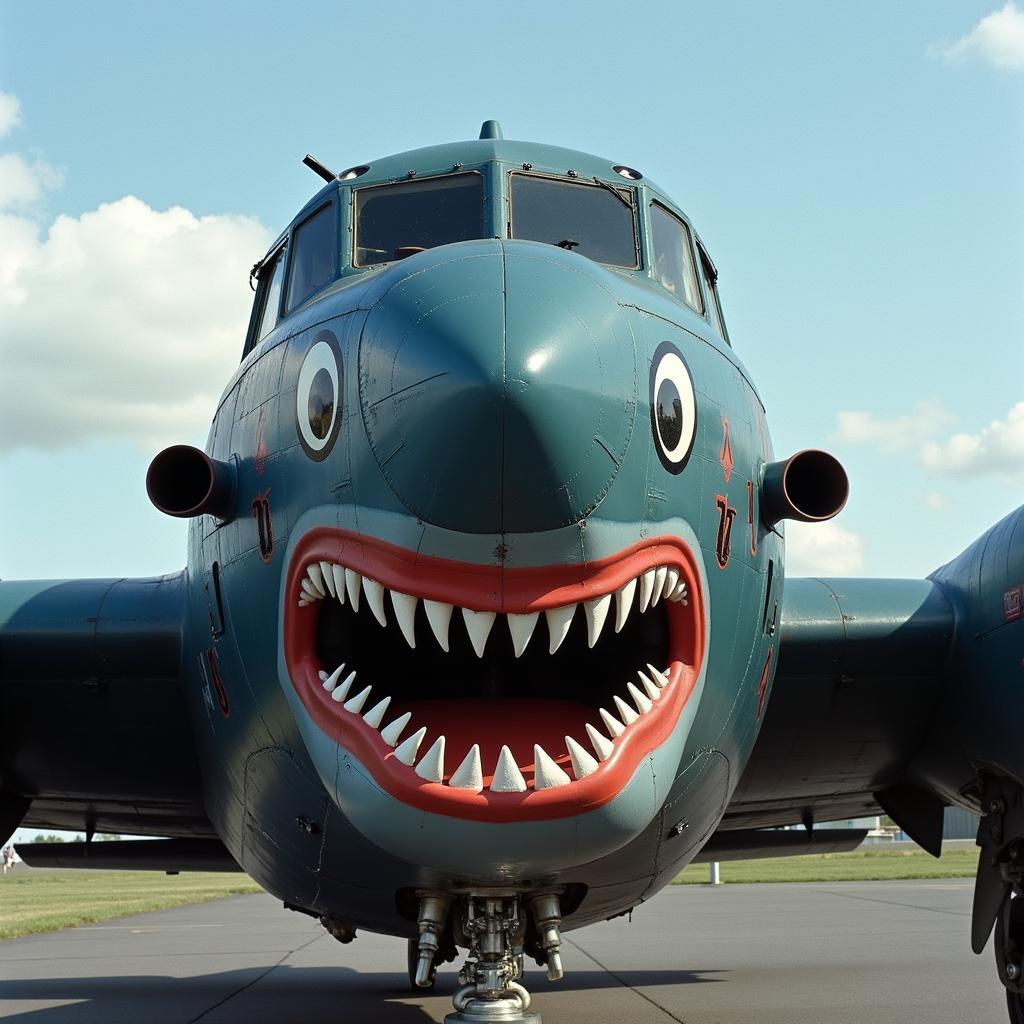B25 Nose Art: A Legacy of Creativity in the Skies
The roar of the engines, the wind whipping past, and the adrenaline pumping through your veins as you take to the skies – these are the sensations that B-25 crews experienced during World War II. But amidst the intensity of combat, a unique form of expression emerged – B25 Nose Art. Painted directly onto the aircraft’s nose, these vibrant murals became more than just decoration; they were symbols of pride, camaraderie, and a touch of humanity in the face of war.
The Rise of B25 Nose Art: More Than Meets the Eye
While the exact origins of nose art are debated, it’s widely believed that it first appeared during World War I. However, it was during World War II that nose art truly took flight, evolving into an art form. The B-25 Mitchell bomber, a workhorse aircraft of the US Army Air Forces, became a particularly popular canvas for these airborne masterpieces.
Why the B-25? Perhaps it was its distinctive, bulbous nose that provided ample space for artistic expression. Or maybe it was the camaraderie shared amongst B-25 crews, who often named their aircraft and saw nose art as a way to personalize their war machines and imbue them with a sense of identity.
Iconic Themes: From Pin-Ups to Lucky Charms
B25 nose art often reflected the spirit of the times. Pin-up girls, inspired by Hollywood starlets and Vargas girls, were a popular choice, offering a touch of glamour and a reminder of home. These seductive figures, often depicted in playful poses, served as mascots and good luck charms for the crews.
 B-25 Bomber Nose Art Featuring a Fierce Animal
B-25 Bomber Nose Art Featuring a Fierce Animal
Beyond the allure of pin-ups, fierce animals also dominated B25 nose art. Sharks, eagles, tigers, and panthers, teeth bared and claws extended, reflected the aggression and power of the aircraft and its crew. These animalistic depictions served as a visual warning to the enemy, projecting an aura of strength and determination.
Beyond Aesthetics: The Deeper Meaning of B25 Nose Art
While the visual impact of B25 nose art is undeniable, it’s crucial to remember that these murals were more than just decorative elements. They served a profound purpose for the airmen who flew these dangerous missions.
-
Boosting Morale: In the face of harrowing combat missions and the ever-present threat of death, B25 nose art provided a much-needed morale boost. A glimpse of a familiar face or a fierce animal could offer comfort, reminding crews of what they were fighting for and the camaraderie they shared.
-
Building Identity: With hundreds of identical bombers rolling off the production lines, B25 nose art allowed crews to personalize their aircraft. By giving their planes a unique name and design, they forged a stronger bond with their machines and instilled a sense of pride and ownership.
-
Propaganda and Psychological Warfare: B25 nose art also played a role in propaganda and psychological warfare. The bold designs and often-provocative imagery served as a visual display of American strength, determination, and even a touch of defiance.
Preserving a Legacy: B25 Nose Art Today
Today, B25 nose art continues to captivate and inspire. Enthusiasts and historians meticulously research and restore these aircraft, painstakingly recreating the original artwork. Museums and airshows showcase these flying canvases, ensuring that the legacy of these airborne masterpieces lives on.
More than just paint on metal, B25 nose art provides a unique window into the past. These murals offer a glimpse into the lives, emotions, and artistic expressions of the young men who bravely took to the skies during a tumultuous period in history.


